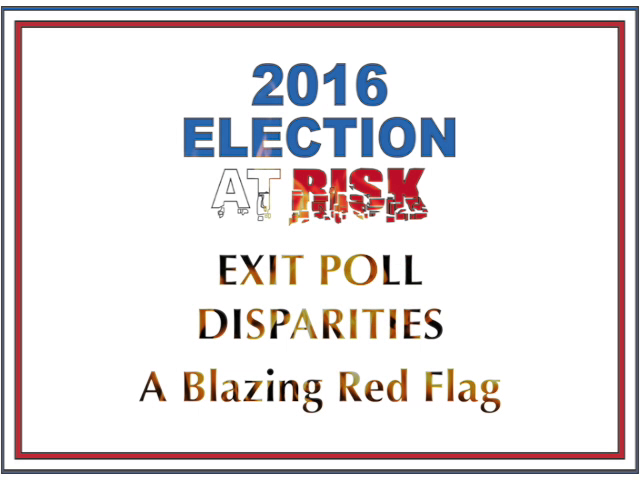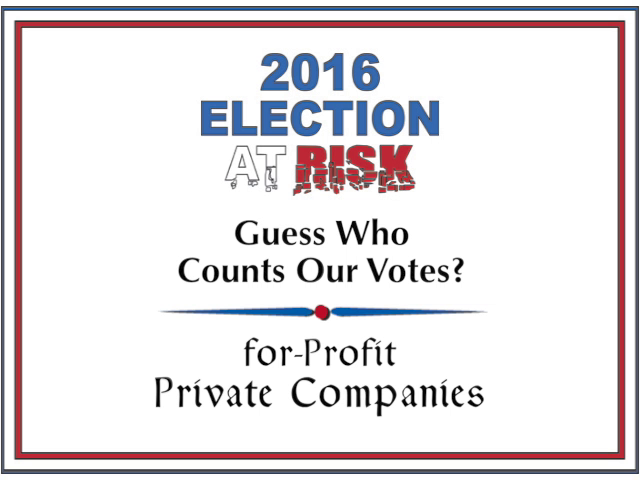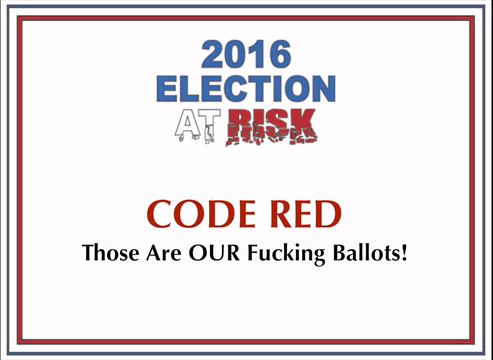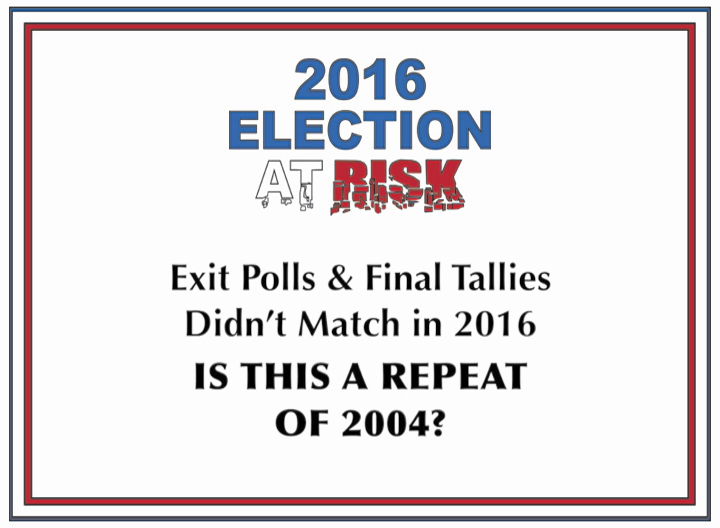ELECTIONS at RISK
The Work of DOROTHY FADIMAN
E-voting Machines Disenfranchise Voters (1:28)
Voting machine malfunctions on election day 2004 lead to significant delays, especially in low income communities.
Related Clips
2016 Election at Risk

EXIT POLL DISPARITIES: A Blazing Red Flag (3:08)
During the 2016 Primary Election, many people reported difficulties voting. Problems ranged from registration issues to not enough polling sites.

Election at Risk: Guess Who Counts Your Vote? For-Profit Private Companies (3:12)
In the 2016 Presidential Election, 98% of our votes will be recorded on memory cards and counted by computers. Who is programming those computers and who, then, counts our votes?

CODE RED: Those Are OUR Fucking Ballots! (1:44)
Counting our votes in an observable way ensures the legitimacy of our elections. The public needs to have an undistorted voice in the making these hard choices.

2016 Election at Risk: Exit Polls & Final Tallies Didn't Match in 2016. IS THIS A REPEAT OF 2004? (1:41)
In the 2016 Presidential Election, significant discrepancies appeared between exit polls and the final tallies in seven states. Six of the seven states – Ohio, Wisconsin, North Carolina, Iowa, Pennsylvania, and Nevada–were also battleground states with outcome-altering results.
Does Your Vote Actually Count?

Can E-Voting Machines Be Trusted? (1:42)
Part of the Elections at Risk campaign. E-Voting machines malfunction frequently, leading to long lines, votes flipping between candidates on touch screens and unverifiable final tallies.

Vote Tallies Reveal Dramatic Irregularities (1:32)
Part of the Elections at Risk campaign. Exit polls on election night 2004 showed a commanding lead for John Kerry. By the end of the night, there had been a "red shift" throughout swing states, giving George Bush the electoral votes he needed to retain the Presidency.

Was the Ohio Vote Count Ever Verified? (1:11)
Part of the Elections at Risk campaign. Warren County, Ohio. In the days following the 2004 election, 92,000 votes are "counted" in secret. Independent observers are locked out of the building. Verification of the accuracy of vote totals was never achieved.
Election Night

Voting Theft in Action: An Election Night Saga (9:55)
Election night 2004 raised serious questions across the country. Experts, politicians, reporters, and everyday folks all observed a troubling chain of events, leading to suspicion of widespread election fraud. People from coast to coast reported machine breakdowns, voter disenfranchisement, irregular tallies and mass confusion.
The Mystery of E-Voting Security

The Shadow Side of E-Voting (0:56)
Part of the Elections at Risk campaign. Technical security expert Bruce O'Dell describes the lack of transparency for electronic voting machine companies that won't allow independent audits.

Election Rigging Made Easy (0:57)
Part of the Elections at Risk campaign. Computer expert Chuck Herrin describes how he wirelessly changed 1.3 million votes from a parking lot outside of an election building.

Computer Programmer Becomes a Whistleblower (3:13)
Clint Curtis, a veteran computer programmer, testifies at a U.S. Congressional Hearing about being contacted by a Florida Congress person to rig Florida's elections.
Suppressing Access

E-voting Malfunctions Disenfranchise Voters (1:28)
Voting machine malfunctions on election day 2004 lead to significant delays, especially in low income communities.

Mysterious Glitch Causes Votes to Switch (4:48)
"I pushed my vote for John Kerry, immediately the vote lights up the name George Bush. Well, I screamed!" Voters throughout the country report seeing their votes switch!
Concealing the Truth

The Silence of the Media (2:58)
Journalists speak out about the mainstream media's failure to report election irregularities and discrepancies occurring throughout the country.

Why Don't the Democrats Fight Back? (1:54)
Election observers ask why Democrats don't investigate when they lose an election and the final tallies are suspicious.

How Can the Owner of the Team be the Umpire? (1:37)
"Did I do the wrong thing by contacting the FBI and providing them with evidence?" A citizen testifies before Members of Congress about trying to report evidence of over-voting in Ohio, where the top state election official is also the co-chair of the Bush-Cheney re-election campaign.
Why Paper Ballots?

New Mexicans Unite to Promote Paper Ballots (1:40)
Citizens work together to change New Mexico's form of voting from electronic machines to paper ballots. "What we did in New Mexico, needs to happen all over the country."

The Value of Paper Ballot Voting (1:15)
Election and computer experts explain the merits of paper ballot voting. "It takes a long time to change 10,000 paper ballots by hand. It takes 3 seconds to change 10,000 votes on a computer."